
IUCN Regional Conservation Forum for Europe, North, and Central Asia 2024
The Wildlife Conservation Society EU Office (WCS EU) actively participated in the IUCN Regional Conservation Forum for Europe, North, and Central Asia, which took place from 30 September to 3 October 2024 in Bruges, Belgium. WCS EU organised two sessions to share insights on key policy work and conservation efforts linked to the implementation of the Kunming-Montreal Global Biodiversity Framework and on scaling finance of high integrity tropical forests.
Once every four years, the International Union for Conservation of Nature (IUCN) convenes its Regional Conservation Fora as a crucial platform for the IUCN Members, Commissions, and the Secretariat to prepare for the upcoming IUCN World Conservation Congress. The IUCN Regional Conservation Forum for Europe, North, and Central Asia (RCF24ENCA) constituted a major opportunity to present sustainable development issues and conservation priorities from global to regional perspectives, advance the next IUCN quadrennial programme, and help inform and steer IUCN’s strategic direction in the regions. As a member of IUCN, we were thrilled to contribute to shaping and guiding IUCN's strategic direction in the European region.
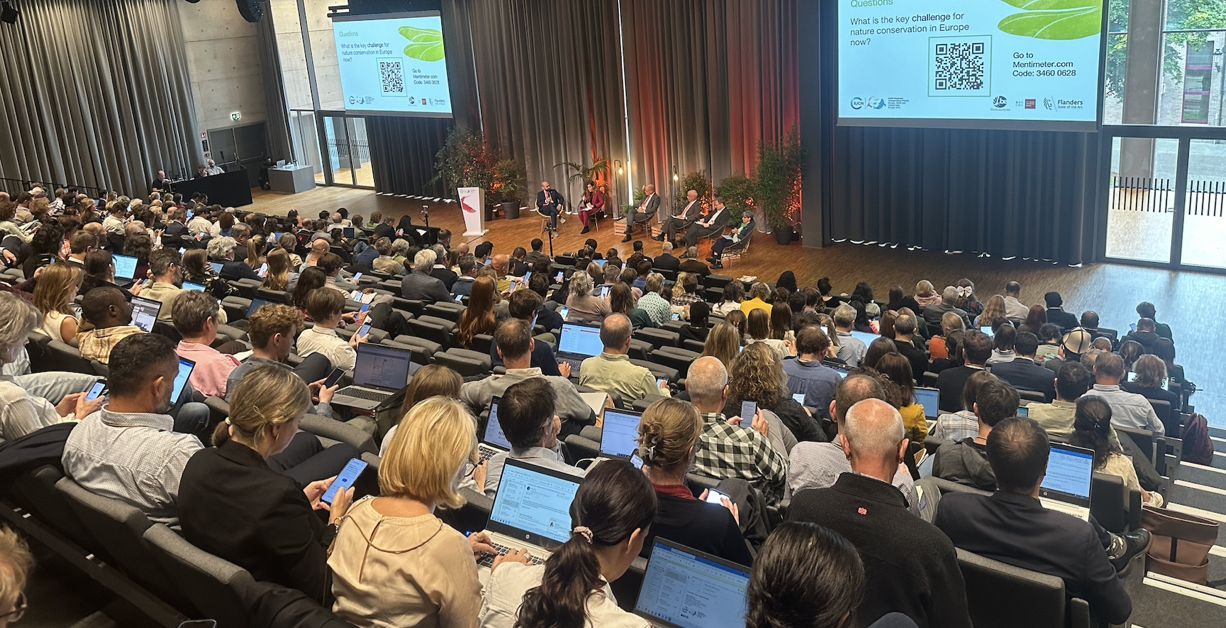
During the forum, we hosted two sessions:
Advancing the Kunming-Montreal Global Biodiversity Framework and the Paris Agreement on climate change: A European Perspective
In an era where human-induced pressures pose unprecedented threats to our natural world—ranging from habitat conversion for intensive agriculture to the far-reaching impacts of climate change—there's a pressing need for concerted action. At the forefront of this endeavor stands the European Community, poised to drive forward the implementation of both the Kunming-Montreal Global Biodiversity Framework (KM-GBF) and the Paris Agreement on climate change. These frameworks stand as beacons of hope, essential for reversing the tide of climate change and environmental degradation and ensuring a sustainable future for generations to come. In this session, we explored how the European Community can further amplify its pivotal role, including through policy change, innovative finance, and supporting impactful on-the-ground work, in advancing the objectives of the KM-GBF and the Paris Agreement and fostering enhanced coordination and synergies between them.
Speakers included:
- Dr. Madhu Rao, Chair, IUCN World Commission of Protected Areas
- Mr. Daan Vandenberghe, Flemish UN Youth Delegate for Sustainable Development
- Ms. Aurelie Godefroy, Deputy Head of Unit INTPA F2- Environment, Sustainable Natural Resources, European Commission
- Mr. Cyrille Barnerias, Director, European and International Relations, French Biodiversity Agency
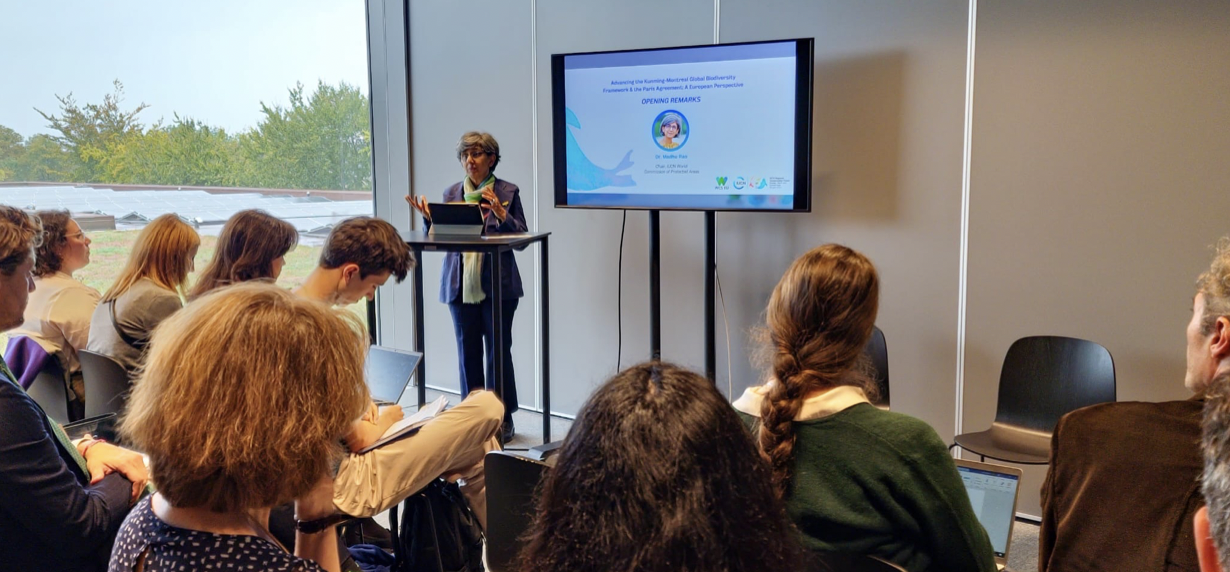
Dr. Madhu Rao, Chair of the IUCN World Commission of Protected Areas, opened the session and emphasized that the vast majority of global biodiversity lies outside the EU where we still have an opportunity to prevent the loss of ecological integrity, and to conserve and restore high integrity ecosystems. One of the main drivers of global deforestation, she noted, is the expansion of agricultural land to produce commodities such as cattle, wood, cocoa, soy, palm oil, coffee, and rubber. As a major economy and consumer of these commodities, the EU bears partial responsibility for the deforestation and forest degradation associated with their production. Recognizing this issue, the EU aims to lead the way in solving it. Dr. Rao called on the EU to invest directly in supporting KM-GBF implementation, raising national ambitions, influencing policy, and ensuring sustainability of supply chains of food and commodities that end up in the EU. In doing so, the EU can help drive meaningful change and contribute to the global effort to protect and restore biodiversity.
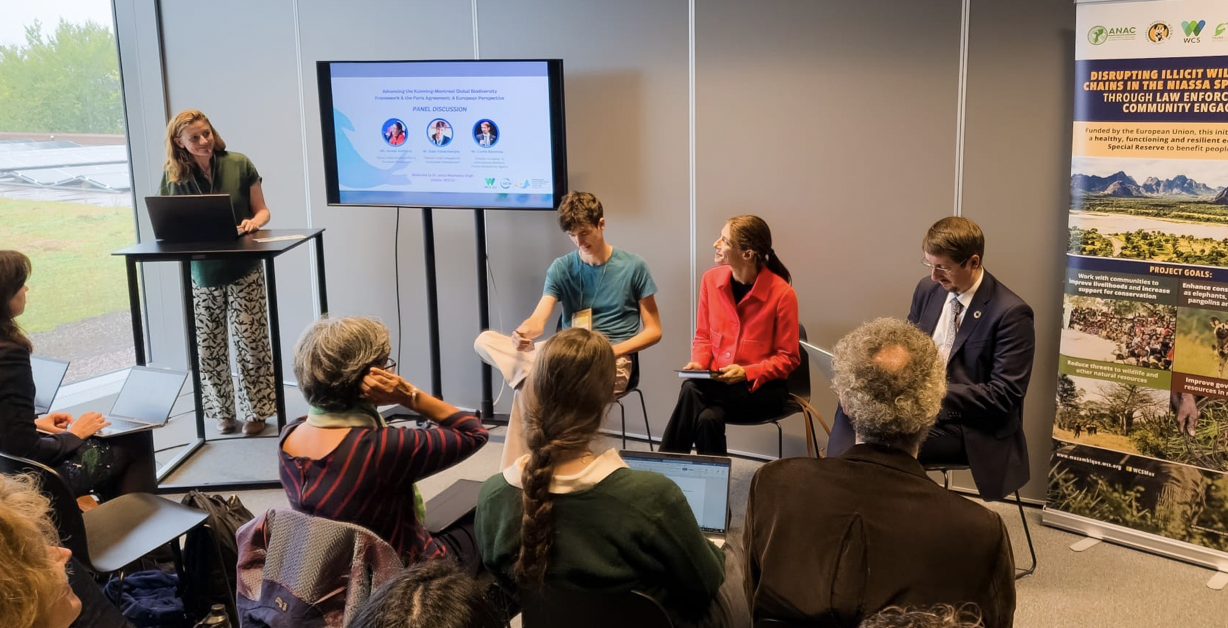
Dr. Janice Weatherley-Singh, Director, Wildlife Conservation Society EU Office, introduced the speakers and moderated the panel discussion.
Mr. Daan Vandenberghe, Flemish UN Youth Delegate for Sustainable Development, highlighted several key topics related to youth, sustainability, and climate action. He first emphasized the critical role of complex ecosystems as carbon sinks and mitigating the effects of climate change. He also noted that while young people under 18 make up 40% of the global population, they are not granted the right to vote, which limits their ability to influence political decisions. To address this, Mr. Vandenberghe called for alternative methods to ensure youth are heard in shaping policies that impact their future. He referenced Belgium's Children Climate Summit as an example of such efforts, aimed at giving young people a platform to influence environmental discussions. He also expressed concern about the weakening of environmental policies within Europe, pointing to the example of the ongoing debates around the nature restoration law. Finally, Mr. Vandenberghe stressed the need to bridge the finance gap in climate action by ending subsidies for fossil fuels.
Mr. Cyrille Barnerias, Head of Europe and International Affairs at the French Biodiversity Agency (OFB) stressed that France is fulfilling its responsibility under the Kunming-Montreal Global Biodiversity Framework (KM-GBF), particularly by increasing public development aid dedicated to biodiversity conservation. This is done primarily through the French Development Agency (AFD) and the French Global Environment Facility (FFEM). The French Biodiversity Office also contributes by supporting initiatives like NatureXpairs, which aims to protect 30% of the planet by 2030, and the French Committee of the IUCN through the ProBioDev programme, which provides support to Civil Society Organizations (CSOs) working on biodiversity in developing countries. Additionally, France collaborates with several countries in the Global South such as South Africa to further these efforts (see here).
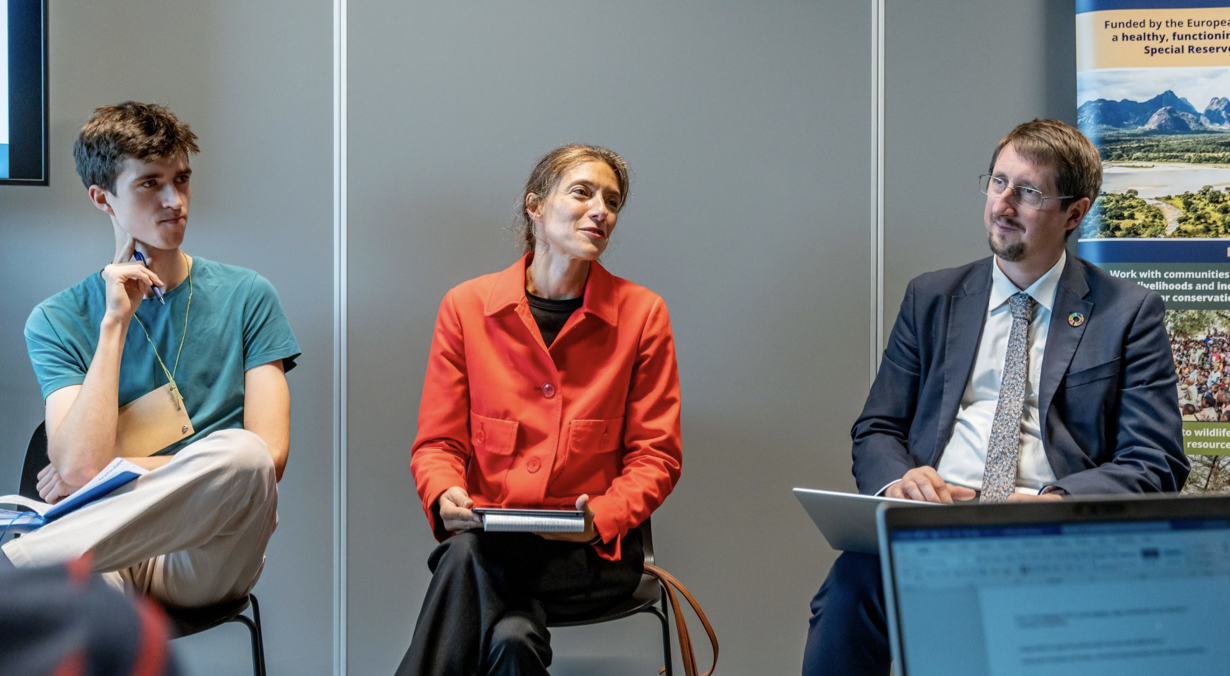
Scaling Finance of High Integrity Tropical Forests
The High Integrity Forest Investment Initiative (HIFOR) is a new innovative tool for ecosystem services program to incentivize the maintenance of climate regulation and biodiversity conservation by high integrity tropical forests by providing long-term financing to forest stewards to maintain their role in climate regulation, protect their biodiversity, and preserve their socio-cultural value. Across all high integrity tropical forests 7.5 billion dollars annually is needed for nature stewardship. Business risks from biodiversity decline and climate are not confined to supply chains and operations but also include broad systemic risks associated with the decline and degradation of nature. This session engaged IUCN members, Commission experts, and non-IUCN members to discuss the importance of multi-stakeholder collaboration on the conservation of intact tropical forests and raised awareness on scaling financing for high integrity tropical forests.
Speakers included:
- Dr. Tom Evans, Senior Director, Forest Conservation, WCS
- Mr. Louis Bernard Cheteu, Senior Climate and Biodiversity Policy Advisor, WCS Republic of Congo
- Mr. James McBreen, Programme Manager, Technology and Innovation, IUCN
- Dr. Matthias Pitkowitz, Founder & CEO of EQX Biome
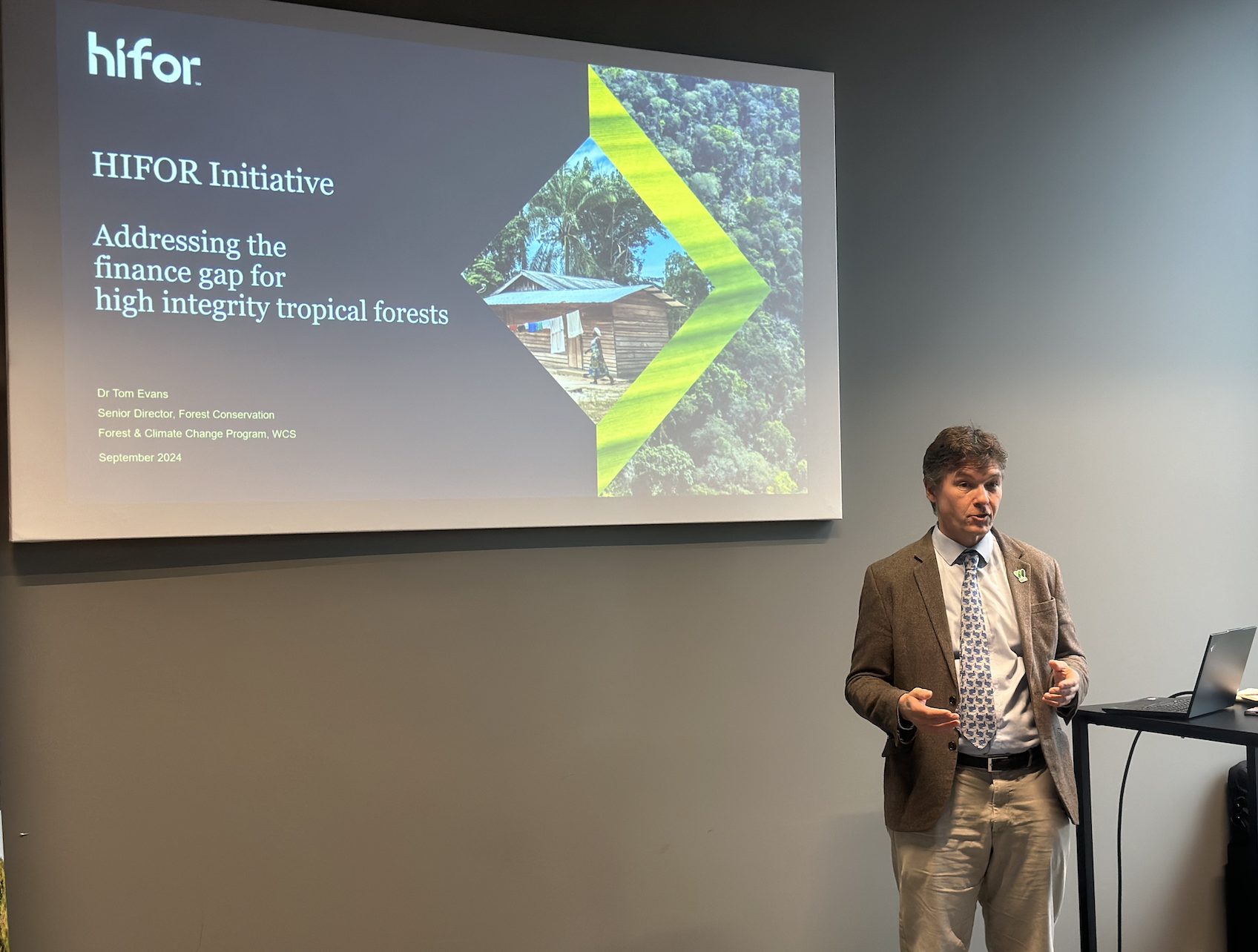
Dr. Tom Evans, Senior Director for Forest Conservation at WCS, described the High Integrity Forest Investment Initiative (HIFOR), which WCS has launched to address a widely recognized need for more scalable, sustainable financing for high integrity tropical forests. HIFOR will create environmental services certificates, referred to as Units, which can be bought and used to support public claims that a buyer has contributed to global biodiversity or climate targets. He further explained that a HIFOR Unit represents the conservation outcomes in a hectare of well-conserved, high integrity tropical forest within a large HIFOR Accounting Area over a ten-year period. The HIFOR Unit is an indicator of nature-positive outcomes achieved through the conservation of these high-biodiversity ecosystems. An additional metric associated with this Unit is the number of tons of net CO2 removal from the atmosphere. A set of criteria and assurance processes allow buyers to be confident that purchased HIFOR Units originate from well-designed projects and have been accurately quantified. He added that HIFOR represents a payment for environmental services model that rewards the stewardship (or, equivalently, the maintenance) of areas in very good ecological condition and not subject to acute short-term threats. Dr. Evans concluded that this initiative differs fundamentally from models that reward avoided loss of forest carbon or biodiversity in areas that do face high short-term threats, or which reward restoration/recovery of these attributes where they have already been lost.
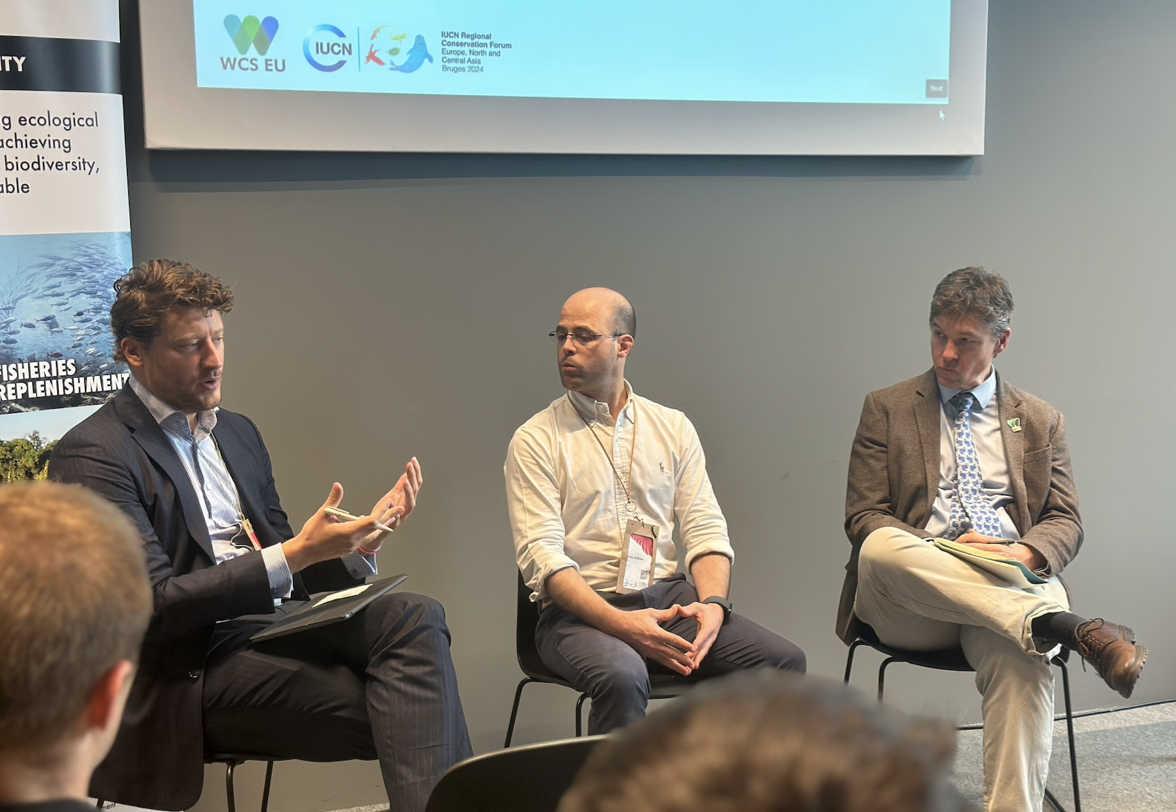
Dr. Matthias Pitkowitz, Founder & CEO of EQX Biome, emphasized the critical role of rainforests in the global fight against climate change, noting that every year they sequester 20% of man-made carbon emissions, provide 25% of the world's freshwater, and are home to the majority of Earth's biodiversity. Despite their vital importance, he warned that rainforests, especially the Amazon, are at tipping point of collapse, with record-breaking droughts and unprecedented criminal fires threatening their existence. During the talk, he outlined three crucial factors needed to scale up financing for rainforest conservation: applying pressure on corporations, creating effective "connective tissue" (i.e. structures) between investors and projects, and fostering investment. Large corporations, responsible for the bulk of carbon emissions and biodiversity destruction, must feel more pressure in order to decarbonize and halt their reliance on resources from global ecosystems like the Amazon. This corporate accountability is essential for generating significant movement toward rainforest protection, and the financial flows that will help protect them. Dr. Pitkowitz concluded with the importance of creating robust connective structures between investors and conservation projects. These frameworks must be close enough to the "ground" (forest) to ensure results, while not being so detail-oriented as to limit scalability.